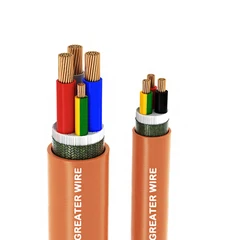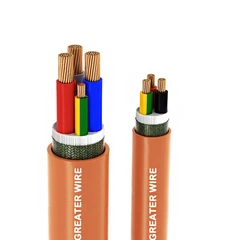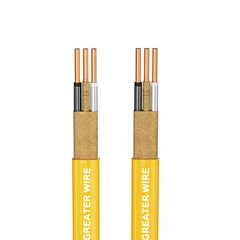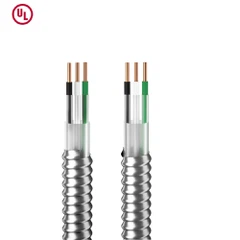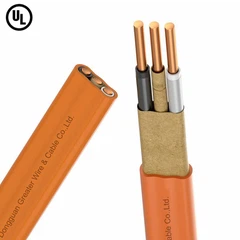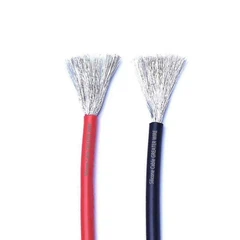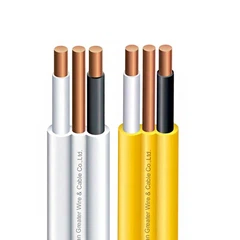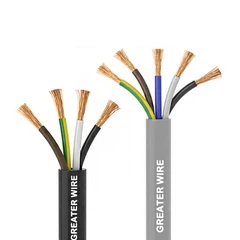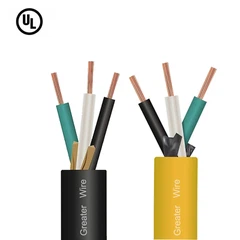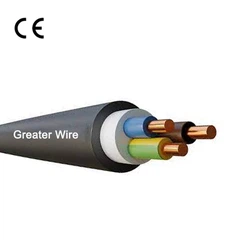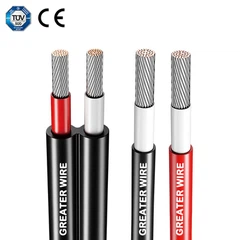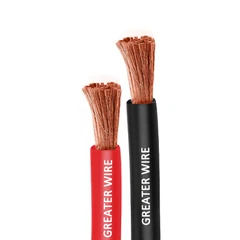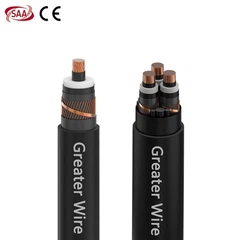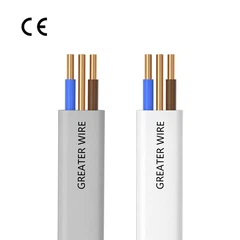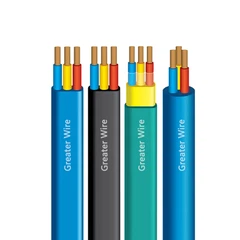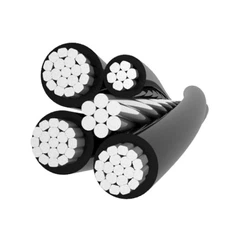Underground Feeder (UF-B) cables are a crucial component in modern electrical installations, especially for outdoor and underground wiring. They are designed to deliver power safely and efficiently to remote structures like garages, sheds, outdoor lighting systems, and water pumps.
However, not all UF-B cables are created equal. To ensure safety, reliability, and compliance with electrical codes, UF-B cables must meet strict industry standards. These standards dictate everything from the materials used to how the cables are labeled.
In this article, we'll explore the specifications and governing standards that UF-B cables must adhere to, why they matter, and how to identify compliant products.
What Is a UF-B Cable?
Before diving into the standards, it's essential to understand what a UF-B cable is and why it's different from other electrical wiring.
Definition
A UF-B cable, or Underground Feeder Cable, is a type of electrical cable specifically designed for direct burial underground without the need for additional conduit. The "B" in UF-B stands for Branch Circuit, meaning it can supply power to multiple outlets or devices.
Key Features
- Moisture-Resistant: Built to withstand underground conditions where moisture is common.
- Sunlight-Resistant: Its outer jacket is designed to endure direct sunlight without degrading.
- Durable Outer Sheath: Provides extra protection against physical damage.
- Ease of Installation: Can be buried directly in soil without conduit, saving time and cost.
Common Applications
- Outdoor lighting systems
- Garden or landscape power supply
- Pumps and well systems
- Detached garages, sheds, or barns
Why Standardization Matters
Standardization plays a vital role in the electrical industry. For UF-B cables, it ensures:
- Safety: Prevents hazards like short circuits, electric shocks, and fires.
- Compatibility: Ensures components from different manufacturers work together seamlessly.
- Regulatory Compliance: Helps electricians and homeowners pass inspections and stay compliant with local building codes.
- Insurance Validity: Many insurance policies require certified and compliant wiring to cover damages after electrical incidents.
Without proper standards, the risk of dangerous or faulty installations increases significantly.
Governing Standards for UF-B Cables
UF-B cables must meet several national and international standards. Below are the primary governing specifications:
National Electrical Code (NEC)
The NEC, published by the National Fire Protection Association (NFPA), is the leading standard for safe electrical installation in the United States.
Relevant Section: Article 340 – Underground Feeder and Branch-Circuit Cable.
Key NEC Requirements:
- Minimum burial depth requirements (usually 24 inches without conduit).
- Restrictions on where UF-B cables can and cannot be used.
- Proper cable securing and support during installation.
Why It Matters:
Compliance with NEC ensures the cable is installed correctly and passes electrical inspections, preventing costly rework or hazards.
UL Standards (Underwriters Laboratories)
Underwriters Laboratories (UL) is a global safety certification organization that tests and certifies electrical products.
UF-B cables typically fall under two main UL standards:
- UL 83: Governs thermoplastic-insulated wires and cables.
- UL 493: Specifically applies to underground feeder and branch circuit cables.
UL Marking Example:
A compliant cable will have the UL logo and standard number clearly printed on its jacket. This marking is proof that the cable has been tested for safety and performance.
ASTM and Material Standards
The American Society for Testing and Materials (ASTM) provides standards for the physical materials used in UF-B cables:
- ASTM B3: Covers soft annealed copper wires, which are commonly used as conductors in UF-B cables.
- Ensures the purity and quality of the copper conductors for optimal conductivity and durability.
Local and International Codes
Depending on your location, there may be additional regional standards:
- CSA (Canadian Standards Association): Governs UF-B cable use in Canada.
- IEC (International Electrotechnical Commission): Sets global standards for cable performance and safety.
- Local Building Codes: Municipalities may have their own additional requirements for burial depth, conduit use, or installation methods.

Key Specifications Defined by These Standards
UF-B cables must meet strict specifications to be considered compliant. Here are the most important characteristics defined by the governing standards:
| Specification | Typical UF-B Requirement |
|---|---|
| Conductor Material | Copper, soft annealed, ASTM B3 certified |
| Voltage Rating | 600 volts |
| Temperature Rating | 60°C or 90°C (depending on insulation) |
| Moisture Resistance | Outer jacket must resist water penetration |
| Sunlight Resistance | Jacket must be UV-resistant |
| Marking | NEC, UL, manufacturer name, wire gauge, and rating |
These specifications ensure the cable performs safely in demanding outdoor environments.

Compliance and Certification
To identify compliant UF-B cables:
- Look for UL or CSA Marks: These prove the cable has been independently tested.
- Check NEC Compliance: The cable jacket should state "UF-B" along with NEC reference numbers.
- Verify Gauge and Rating: Ensure the printed voltage, temperature, and conductor gauge match your project needs.
Risks of Non-Compliant Cables
- Increased fire hazards due to poor insulation quality.
- Failed inspections leading to fines or project delays.
- Potential insurance claim denial after electrical damage.

Best Practices for Choosing and Installing UF-B Cable
Choosing and installing the right UF-B cable is just as important as understanding its standards.
Selecting the Right UF-B Cable
- Gauge: Choose the correct wire size based on the load requirements.
- Environment: Ensure the jacket is suitable for direct burial and exposure to sunlight.
- Certification: Only purchase cables with visible UL or CSA certification marks.
Installation Tips
- Follow NEC burial depth guidelines (usually 24 inches for direct burial).
- Avoid sharp bends to prevent damaging the outer sheath.
- Keep the cable away from other underground utilities like gas or water lines.
- Use protective conduits in high-traffic or high-risk areas.
Why Choose Our UF-B WIRE Solutions
At Dongguan Greater Wire & Cable Co., Ltd., we take pride in providing UF-B WIRE products that meet and exceed all major industry standards, including NEC, UL, and ASTM requirements. Our UF-B WIRE cables are UL-listed, highly durable, and engineered for safety and performance, making them the perfect choice for projects of any scale-from small residential installations to large commercial developments.
Our Advantages
Strict Compliance with Standards: Every UF-B WIRE product undergoes rigorous quality control to ensure compliance with NEC, UL, and ASTM standards.
High-Performance Materials: We use premium-grade copper conductors and advanced insulation technologies for better conductivity, durability, and safety.
Flexible Order Support: Whether you need small-volume supplies for residential projects or large-scale procurement for commercial installations, we can deliver.
Professional Technical Support: Our experienced pre-sales and after-sales team is ready to provide one-on-one guidance, technical advice, and quick troubleshooting to ensure your project runs smoothly.
Get in Touch with Us
Ready to learn more about our UF-B WIRE solutions or request a quote? Our dedicated team is here to assist you.
Dongguan Greater Wire & Cable Co., Ltd.
Tel/WhatsApp/WeChat: +86 135 1078 4550 / +86 136 6257 9592
Email: manager01@greaterwire.com
Contact us today and experience professional service, certified quality, and reliable delivery-all from a single trusted source for your UF-B WIRE needs.

